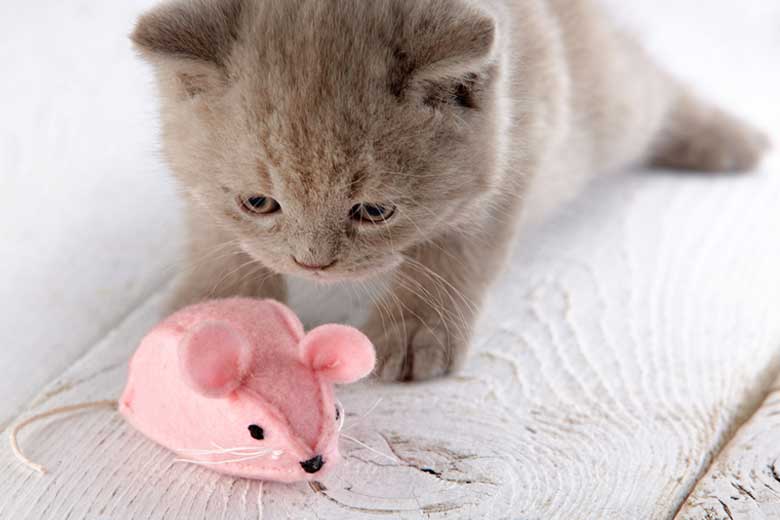When it comes to our beloved pets, we adore pampering them. We eagerly purchase new bags or cans of food, even when the old ones remain unopened (and if they don’t approve, should it even be on the shelves?). We indulge them with colorful accessories and, of course, cat toys. However, there’s much more depth to toys than simply selecting a grey mouse with a pink tail from the nearest pet store. They require timely replacement when worn out, and regular rotation to keep our feline friends engaged and entertained.
Playtime essentials: How often do cats need new toys?
Cats are natural hunters with an instinctive desire to play and engage their predatory behaviors. To satisfy these innate hunting instincts and prevent boredom or destructive behavior, it’s crucial to rotate toys every 1-2 weeks and introduce new ones every few months.
Different types of toys have varying lifespans, making it essential to consider the durability and longevity of each toy when introducing new ones to your feline friend.
Plush toys, with their soft and cuddly textures, often fall victim to excessive play and require more frequent replacement. These toys are prone to wear and tear as cats scratch, bite, and carry them around, causing the fabric to fray and the stuffing to become exposed over time. While plush toys can provide comfort and satisfy a cat’s need to knead and nuzzle, they may need to be replaced every few months or sooner, depending on your cat’s level of activity and roughness during play.
On the other hand, durable toys like wands, balls, and puzzle feeders can withstand more extended use and last longer. Puzzle feeders, designed to dispense treats or dry food as cats manipulate them, are often made of sturdy plastic or wood, making them resistant to wear and tear.
While these durable toys may require less frequent replacement, it’s still essential to monitor their condition and replace them if they become cracked, chipped, or pose a potential safety hazard due to small parts that could be ingested or cause choking. By understanding the lifespan of different toy types, cat owners can make informed decisions about when to introduce new toys and ensure their feline companions always have engaging and safe playtime options.
When selecting new toys for your feline companion, it’s essential to choose options that cater to their diverse play styles, ensuring they receive mental and physical stimulation while satisfying their natural hunting instincts. For cats who enjoy scratching, provide appropriate scratching posts or cardboard scratchers to redirect this natural behavior away from furniture or carpets. Interactive toys that encourage owner participation can be particularly rewarding for both you and your cat.
Remember, every cat has unique preferences and play styles, so observe your pet’s behavior and adjust toy selections accordingly.
Rotating cat’s toys—What exactly is it and why rotating is crucial
While cleaning your house, you’ve probably discovered your cat’s secret collection of toys at least once. These toys are likely dusty, soiled, and unsafe for playtime.
Although cats are intelligent animals, their attention and interest can only extend to a limited selection of toys simultaneously. Toy rotation involves altering your cat’s selection of toys approximately once a week. However, this doesn’t necessitate buying new toys every week. Instead, select four to five toys from an existing collection and store the rest. The following week, swap out the current toys for those that were put away previously. Continue this cycle. The reality is, you don’t need an extensive collection of toys to keep your cat engaged and entertained.
For cats, toys can lose their initial charm over time. This might be because your feline companion is no longer the sprightly kitten bursting with energy or perhaps health challenges restrict their ability to enjoy toys that demand vigorous movement. In such instances, it becomes crucial to diversify the types of toys you offer or to rethink your approach to playtime, tailoring it to better suit your cat’s current capabilities and preferences. Experimenting with new toys or adjusting your interaction style can help ensure your cat remains engaged and happy, despite any changes in their physical condition or interests.
You also don’t have to keep purchasing new toys. There are a lot of DIY tutorials on how to make interesting toys out of everyday objects, such as socks or carton boxes. Make sure your homemade toy is durable and safe for your cat to play with (ensure it’s not made out of toxic materials, and check for any sharp or easily breakable edges).
Cat owners need not continually invest in new toys. A plethora of DIY tutorials exist, teaching how to transform everyday objects—such as cardboard boxes—into captivating toys. It’s essential to ensure these homemade creations are durable and safe for your cat’s engagement. Verify that the materials used are free of toxins and meticulously inspect for any sharp edges or parts that might easily break.
FAQ
How frequently should I introduce new toys to my cat?
Cats thrive on novelty and stimulation, so introducing new toys every few weeks can help keep their interest peaked. However, you don’t always need to buy new toys; rotating existing ones can effectively maintain their curiosity and engagement.
Why is rotating my cat’s toys important?
Rotating toys prevents boredom and keeps your cat’s environment stimulating. Cats are naturally curious creatures, and a fresh set of toys can reignite their playfulness and exploration instincts, contributing to their physical and mental well-being.
Can I just give my cat all their toys at once?
While it might be tempting, offering all toys simultaneously can overwhelm your cat and quickly lead to disinterest in all options. Limiting the number of toys available at any given time makes each one more appealing and special.
FURTHER READING FOR INSPIRATION
How To Train A Cat?
How to Stop Your Cat From Waking You Up in the Mornings?
How Long Can Cats Be Left Alone?

